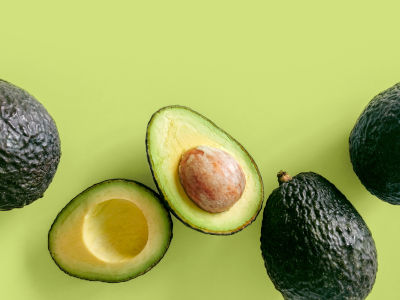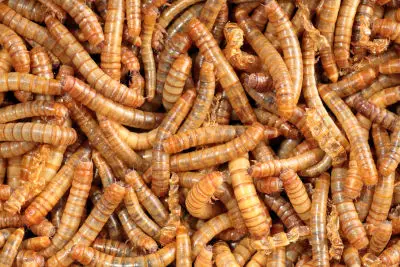Is it Safe to Pick Up a Baby Lizard? A Guide to Handling Young Lizards
Picking up a baby lizard may seem like a harmless and cute activity, but is it safe? The answer is not as straightforward as one might think. While some species of baby lizards are relatively harmless, others can carry diseases or even be venomous. It is important to know the risks involved before attempting to handle a baby lizard.
One of the main concerns when picking up a baby lizard is the risk of disease transmission. Lizards, like all animals, can carry bacteria and viruses that can be harmful to humans. Some common diseases that can be transmitted from lizards to humans include salmonella and campylobacter. These diseases can cause symptoms such as diarrhea, fever, and abdominal pain. It is important to thoroughly wash your hands after handling a lizard to minimize the risk of disease transmission.
| Are these foods dangerous for your Beardie? | |
| Avacado? Click here to learn, from this guide, if this food is dangerous |  |
| Superworms? Click here to learn, from this guide, if this food is dangerous |  |
Another risk associated with handling baby lizards is the potential for venomous species. While most baby lizards are harmless, some species, such as the Gila monster and the beaded lizard, are venomous and can cause serious harm if not handled properly. It is important to research the specific species of lizard before attempting to handle it, and to always wear protective gloves when handling a potentially venomous lizard.
Identifying Baby Lizards
Baby lizards can be difficult to identify, especially if you are not familiar with the species. However, there are some general characteristics that can help you differentiate between baby lizards and other small animals.
First, baby lizards are usually small and have a slender body shape. They also typically have long tails and legs, which are often thin and delicate. Additionally, baby lizards may have distinct markings or colors that help them blend into their environment, such as stripes or spots.
It is important to note that not all baby lizards look the same. Different species of lizards may have unique characteristics that make them stand out. For example, some baby lizards may have a bumpy texture on their skin, while others may have a smooth, shiny appearance.
To properly identify a baby lizard, it is helpful to consult a field guide or seek the advice of a reptile expert. They can provide you with specific information about the species and help you determine the best way to handle the lizard safely.
In general, it is important to approach baby lizards with caution and avoid handling them if possible. This is because they may be easily stressed or injured, and may also carry diseases or parasites that can be harmful to humans. If you do need to handle a baby lizard, be sure to do so gently and with care to avoid causing harm.
Understanding Lizard Behavior
Baby lizards are generally skittish and may try to run away or hide when they feel threatened. They may also bite or scratch if they feel cornered or attacked. It’s important to understand lizard behavior and body language to avoid causing stress or harm to the animal.
Lizards communicate through body language, including head bobs, tail flicks, and color changes. For example, a lizard may puff out its throat to appear larger or darker in color to show aggression. On the other hand, a lizard may flatten its body and remain still to blend in with its surroundings and avoid detection.
When approaching a baby lizard, it’s important to move slowly and avoid sudden movements. This will help the lizard feel less threatened and more comfortable. It’s also important to avoid handling the lizard too much, as this can cause stress and potentially harm the animal.
If a baby lizard is found in the wild, it’s generally best to leave it be and not disturb its natural habitat. If it’s necessary to handle the lizard, it should be done with care and caution to avoid causing harm or stress to the animal.
Safety Measures When Handling Baby Lizards
When handling baby lizards, it is important to take certain safety measures to ensure both the safety of the lizard and the handler. Here are some important considerations:
Proper Handling Techniques
When handling a baby lizard, it is important to be gentle and to avoid squeezing or gripping it too tightly. This can cause the lizard to become stressed or injured. Instead, use a light touch and support the lizard’s body with your hand. It is also important to avoid touching the lizard’s tail, as it can easily break off as a defense mechanism.
Before handling a baby lizard, it is important to wash your hands thoroughly to avoid transferring any harmful bacteria or chemicals to the lizard. It is also important to handle the lizard in a calm, quiet environment, as loud noises and sudden movements can frighten the lizard and cause it to run away or bite.
Potential Risks and Precautions
While baby lizards are generally harmless, there are some potential risks associated with handling them. For example, some species of baby lizards may carry harmful bacteria or parasites that can be transmitted to humans through contact with their skin or feces. It is important to wear gloves or wash your hands thoroughly after handling a baby lizard to avoid any potential health risks.
In addition, some species of baby lizards may bite or scratch if they feel threatened or stressed. To avoid this, it is important to handle the lizard gently and to avoid squeezing or gripping it too tightly. If the lizard does bite or scratch, wash the affected area with soap and water and seek medical attention if necessary.
Overall, with proper handling techniques and precautions, it is safe to pick up and handle baby lizards. However, it is important to be aware of the potential risks and to take steps to minimize them.
Effects on Lizard’s Health and Well-being
Picking up a baby lizard may have negative effects on its health and well-being. Lizards are cold-blooded animals, and their body temperature is regulated by their environment. When a lizard is picked up, it may become stressed, which can cause its body temperature to fluctuate and lead to health problems.
In addition to stress, handling a baby lizard can also lead to injuries. Lizards have delicate skin that can tear easily, and their tails can break off if they are grabbed too tightly. Even if the lizard appears to be unharmed after being picked up, the stress of the experience can weaken its immune system and make it more susceptible to illness.
It is important to note that not all species of lizards are suitable for handling. Some species are more docile and tolerate handling better than others. It is crucial to research the specific species of lizard before attempting to handle it.
Overall, it is best to avoid picking up baby lizards unless it is necessary for their health and well-being. If handling is necessary, it should be done with extreme care and caution to minimize stress and prevent injuries.